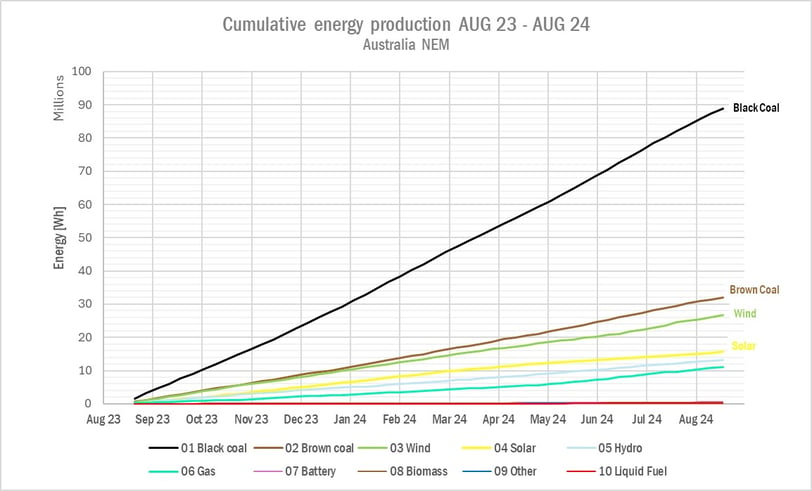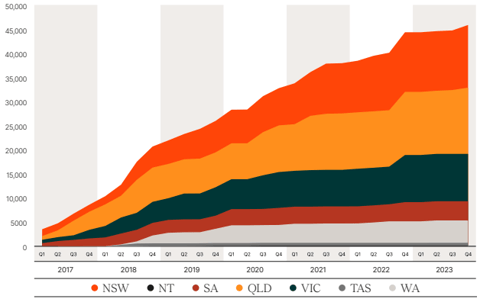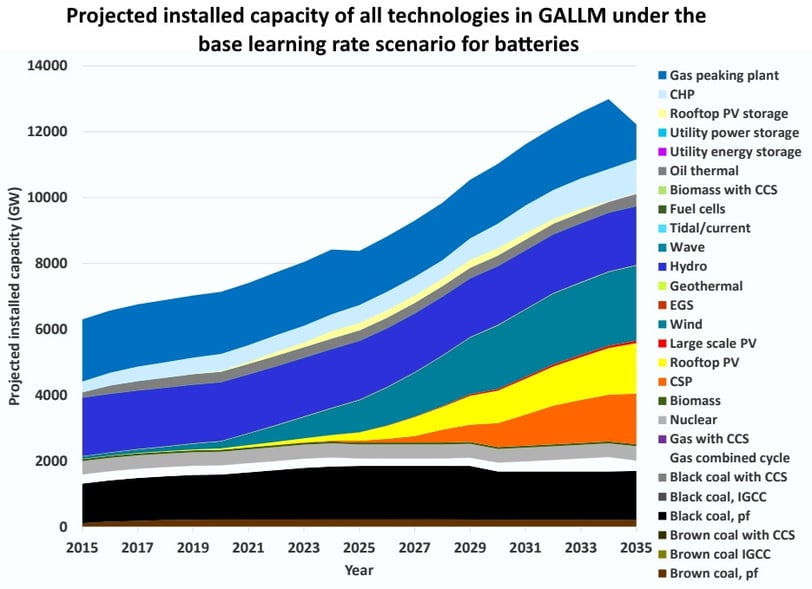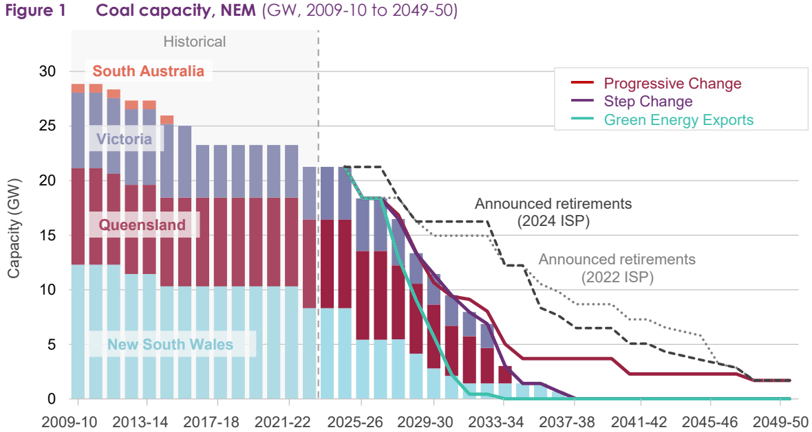Power Market Reforms in Australia: What They Mean for Energy Markets and the Energy Transition
Australia's energy landscape is undergoing a seismic shift as the nation accelerates its transition toward renewable energy. With aging coal-fired power plants gradually being phased out and intermittent power sources like solar and wind taking their place, the need for market reform has become apparent. Power market reforms are being rolled out to address emerging challenges, foster investment in clean technologies, and ensure reliable electricity supply. But what exactly do these reforms entail, and how will they shape the future of Australia’s energy sector?
BUSINESS
xStone
9/12/20244 min read
Why Power Market Reform is Necessary
The primary driver behind the current reforms is the transition to renewable energy. Traditional power generation systems—dominated by coal and gas (64% of energy supply between AUG 2023 and 2024 was from Black and Brown coal)—were built for a centralised model, where power was generated in a few large plants and distributed across the grid. Today, Australia’s energy market is becoming decentralised, with renewables like rooftop solar, wind farms, and batteries playing increasingly significant roles. This decentralisation has introduced new challenges such as grid stability, capacity concerns during peak demand, and managing intermittency from renewable sources.
Without reform, the market would struggle to incentivise investment in the necessary technologies and infrastructure—such as batteries, pumped hydro, and grid interconnectors—required to maintain a reliable and efficient energy supply. The evolving demands of a renewable-heavy market necessitate regulatory changes that encourage flexibility, reward capacity, and create a conducive environment for the continued growth of clean energy.


Key Reforms and Their Impact
Capacity Markets: Guaranteeing Backup Power
One of the central reforms being considered is the introduction of capacity markets. These markets would pay energy providers not just for the electricity they produce, but for their availability to generate power when needed. This is critical for ensuring there is enough dispatchable power—like batteries, pumped hydro, or gas peaking plants—to back up intermittent renewables.
Impact: Capacity markets would help bridge the gap between periods of high and low renewable energy generation, offering certainty for energy users during peak demand and preventing blackouts. For investors, it would offer clear signals to back firming technologies, thus supporting a smoother transition to a renewable-powered grid.
Transmission Network Upgrades: Connecting Renewable Energy Zones
The rapid growth of renewable energy requires substantial upgrades to Australia's transmission network. This involves building new high-voltage power lines to connect Renewable Energy Zones (REZs)—areas rich in wind and solar resources—to population centres and enhancing grid interconnectivity between states. The aim is to allow electricity generated in remote renewable hubs to reach consumers efficiently.
Impact: These upgrades will reduce bottlenecks in the system, enabling faster deployment of renewable energy projects and reducing the risk of price spikes due to transmission constraints. For the energy market, it will help balance supply and demand more effectively, especially during peak periods.
Demand Response and Time-of-Use Pricing: Aligning Demand with Supply
Reforms are also focused on demand-side measures like demand response programs and time-of-use pricing. These mechanisms incentivise consumers to shift their electricity usage to periods when renewable generation is abundant, helping to flatten demand peaks and smooth out the load on the grid.
Impact: This approach will improve grid stability, reduce the need for expensive peaking plants, and encourage more efficient energy consumption. It aligns consumer behaviour with the realities of renewable generation, leading to a more flexible and resilient electricity market.
Energy Storage Integration: Supporting Renewable Generation
With renewables providing an intermittent power supply, energy storage solutions like batteries and pumped hydro are crucial to ensuring grid reliability. Market reforms are focusing on integrating these technologies more fully into the energy system, ensuring that storage solutions are adequately compensated for the services they provide, such as frequency control, voltage regulation, and energy shifting.
Impact: Proper integration of storage solutions will help Australia make better use of its renewable energy resources, reducing the need for fossil fuel backups and enabling the grid to handle higher shares of wind and solar power.
Emissions Reduction Targets and Carbon Pricing: Aligning with Climate Goals
Australia's market reforms are also expected to incorporate policies aimed at reducing carbon emissions, such as emissions reduction targets and carbon pricing mechanisms. These policies will gradually phase out the most carbon-intensive power generation and encourage cleaner alternatives.
Impact: This will accelerate the decarbonisation of the energy market and further drive investment into renewable energy technologies, contributing to the achievement of Australia's climate targets.




Challenges and Opportunities for Investors
As the reforms roll out, investors will need to navigate a complex landscape. On the one hand, the shift to renewables and associated technologies presents enormous opportunities. Capacity markets, for instance, will create demand for flexible generation and storage technologies, while transmission upgrades open the door for large-scale renewable energy projects.
On the other hand, the transition also presents risks. The ongoing retirement of coal plants, regulatory uncertainty, and fluctuating energy prices will test the resilience of existing investments. Investors need to keep a close eye on policy developments and regulatory changes to ensure they position themselves favourably in the market.
What This Means for the Energy Transition
The power market reforms currently underway will shape the trajectory of Australia’s energy transition for years to come. By creating a market structure that better aligns with the realities of renewable energy, these reforms will ensure that Australia can maintain a reliable and affordable energy supply while drastically reducing emissions. However, it will require concerted efforts from policymakers, industry leaders, and investors alike to ensure that the reforms are implemented effectively and that they result in a stable and resilient energy market.
As Australia continues to lead the world in renewable energy adoption, the success of these reforms will be closely watched globally. For the energy sector, the reforms represent a turning point—a move away from traditional power generation toward a more sustainable, flexible, and resilient energy future.
Conclusion
Australia’s power market reforms are not just a response to the current energy transition—they are paving the way for the future. With the right mix of regulatory changes, market incentives, and infrastructure investment, the country is on track to build a clean, secure, and affordable energy system. For investors and energy companies, this is a time of both challenges and opportunities, with the potential for significant long-term rewards as Australia solidifies its position as a renewable energy powerhouse.


Source: AEMO 2024 Integrated System Plan (ISP).




